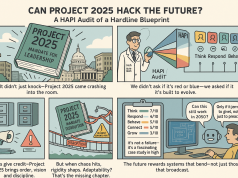In the heart of New York City, the steel-and-glass landscape isn’t the only thing that reflects the fast-paced, ever-changing nature of urban life. The city’s labor market does as well, with the gig economy burgeoning amongst the streets of Manhattan, the boroughs of Brooklyn, Queens, and beyond. This parallel economy—a maze of freelance gigs, contract work, and short-term projects—has come to define a significant chunk of the workforce in NYC, the city that famously never sleeps.
The rise of the gig economy has been meteoric, catering to a population that values flexibility, autonomy, and variety over the traditional nine-to-five grind. Yet, beneath the veneer of freedom and entrepreneurial spirit, there lies a complex spectrum of experiences that can swing from empowerment to exploitation, sometimes in the same heartbeat.
The upside of gig work is often celebrated in the glossy brochures of tech start-ups and the mantra of self-made success stories. Indeed, the allure of setting one’s own hours, choosing clients and projects, and the potential to turn a passion into a paycheck is strong. For many New Yorkers, the gig economy has opened doors to opportunities previously barred by the rigid structures of conventional employment.
But autonomy doesn’t pay the rent in NYC. Gig workers frequently find themselves at the mercy of fluctuating demand, without the safety net of a stable income. Financial stability is a significant battleground for freelancers who must navigate the ebb and flow of a fickle market. Without a regular paycheck, planning for the future or securing a loan becomes a Herculean task. Even more pressing, perhaps, is the absence of employer-provided health insurance and retirement plans—luxuries of the full-time employee that remain out of reach for many gig workers.
Labor rights, too, become a matter of contention in the gig economy. Traditional employment comes with a suite of protections—regulations around minimum wage, overtime pay, and recourse in the event of workplace discrimination or harassment. Gig workers, in contrast, often find themselves in a legal grey area, where the current laws have yet to catch up to novel work arrangements, leaving them vulnerable.
The legal and regulatory landscape in New York is adapting, albeit slowly, as policymakers grapple with the growing need to extend protections and benefits to gig workers. Recent legislation and court rulings have started to address these discrepancies, but progress is piecemeal and often reactive.
This evolving marketplace begs for a collective pause and reflection: How can we ensure that the gig economy is a tide that lifts all boats, rather than a whirlpool that threatens to engulf those that can least afford to sink? How do we protect the rights of workers while fostering the innovation that the gig model promises? What steps should be taken toward securing health benefits, a livable wage, and a safety net that can catch a freelancer when gigs dry up?
We, at The Work Times, invite you to join us in this vital conversation. Share your gig economy stories, your victories, and your vulnerabilities. Let’s harness the collective power of New York’s workforce to advocate for a gig economy that empowers rather than exploits. The future of work in NYC—and indeed the world—may very well depend on the actions we take today.




























